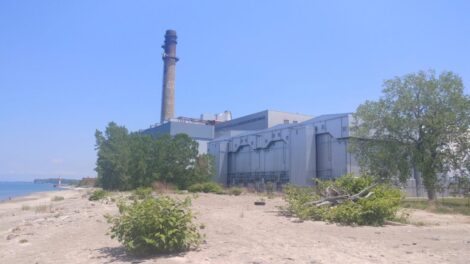NYISO report examines pathways to renewables
New York state will need to increase its electric generating capabilities by 20 gigawatts to meet state’s 2030 requirement that 70% of the state’s power come from renewable sources — and that’s only the beginning.
The state Independent System Operator released “2021-2040 System and Resource Outlook” recently identifying what it terms an unprecedented level of electrical system investment. By 2040, the state will have to add between 111 gigawatts and 124 gigawatts of generating capacity to meet the state Climate Leadership and Community Protection Act’s mandate to have a fully renewable electric grid. For reference, New York has 37 gigawatts of generating capacity, with 12.9 gigawatts of new generation developed since wholesale electricity markets began more than 20 years ago in 1999.
While calling for unprecedented levels of investment, the report does not put a price tag on the upgrades needed.
“The New York ISO remains committed to maintaining reliability as our grid transitions to a clean energy future,” said Rich Dewey, President and CEO of the New York ISO. “The scale of new resource development needed to satisfy system reliability and policy requirements within the next 20 years is unprecedented.”
Transmission upgrades are particularly important for Western New York. The region contains three renewable generation pockets, or areas defined by the ISO areas with renewable energy generation that need transmission upgrades to take full advantage of the renewable resources in those areas.
Chautauqua County, with 115 kilovolts (a unit of potential equal to 1,000 volts), has one of those renewable generation pockets. While there will need to be upgrades in Western New York, the ISO points to specific transmission upgrades in the Finger Lakes, Southern Tier, Watertown and Long Island as key areas.
The Long Island transmission upgrade is needed to get the 20 gigawatts of off-shore wind power that has been proposed to the mainland for use. The Watertown transmission upgrades will become necessary because the existing 115 kilovolt system is expected to limit the availability of wind and solar power already built in the area and the limitation will become more severe as more renewable power is built in the area. In the Southern Tier, the land and natural resource availability are attracting wind and solar developers, but transmission capabilities can’t handle the increased production.
“Without investment in transmission, these areas of the New York grid will experience persistent and significant limitations to deliver the renewable power from these pockets to consumers in the upcoming years,” the ISO report states.
Currently, installed energy capacity in 2022 shows 70% of the state’s power needs are met with fossil fuels and 25% are met with renewables. But, when broken down into zones, most of the power used in Upstate New York’s — including Western New York — is zero-emission (67%). The bulk of that is hydropower (29%) and nuclear (25%), with wind the next-closest power producer at 13%. Downstate’s energy capacity is 92% fossil fuels, 2% zero emissions and 5% hydro pumped storage, which is not qualified as renewable in the ISO’s classification system.
Meeting the CLCPA’s emission-free requirements timelines will mean electrification of buildings and transportation, but the ISO points out those actions will also increase peak and annual demand over time. Looking ahead to 2040, the policy for a zero-emissions electric system will require the development of new technologies to maintain the supply demand balance. The ISO report said dispatchable emission-free resources will be required to fully replace fossil fueled generation, which currently serves as the primary balancing resource.
“Long-duration, dispatchable, and emission-free resources will be necessary to maintain reliability and meet the objectives of the CLCPA. Resources with this combination of attributes are not commercially available at this time but their successful development will be critical to future grid reliability,” the report states.
Given the investment needed, ISO officials are asking state agencies to consider releasing a more detailed procurement schedule for renewable resources to guide long-term electric grid planning and provide clarity to the market.
“This new report was necessary to rethink how and where electric supply resources must evolve, and how to efficiently enable their integration to achieve energy policy targets,” said Zach G. Smith, ISO vice president of system and resource planning. “The opportunities and challenges before us demand new approaches to grid planning. The outlook will be critical to assessing needs and opportunities of the system going forward.”




